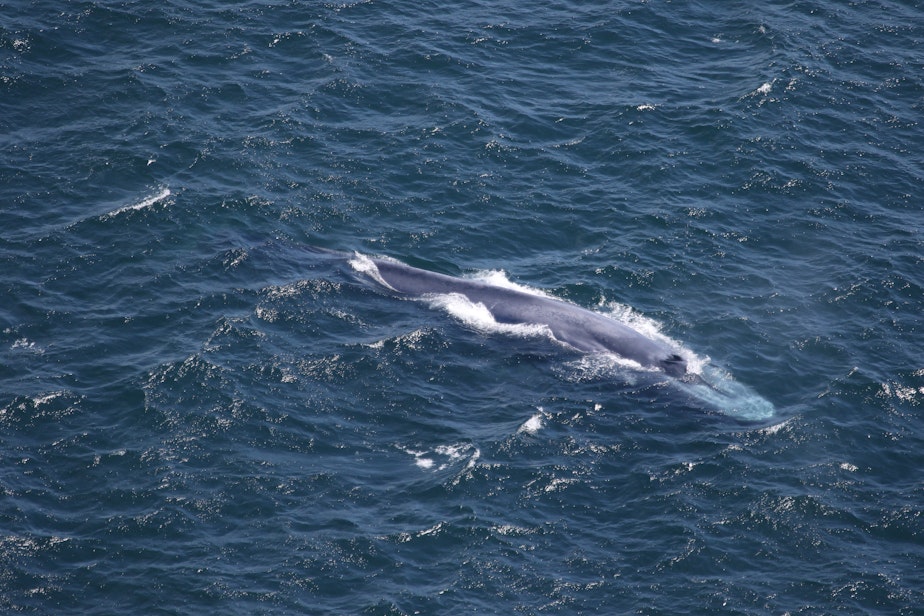Biggest animal on earth spotted off Washington and Oregon coasts

A whale expert is reporting a rare sighting of blue whales off the Washington state coast.
The largest animals on the planet have also been sighted in unusual numbers offshore of Oregon this summer.
Biologists John Calambokidis and Kiirsten Flynn of the Cascadia Research Collective in Olympia had set out from Westport, Washington, in late July to survey for humpback and gray whales when a very tall spout caught their eye.
"We kind of looked at each other and said, 'Ummm, that doesn't look like a gray whale,''' Calambokides recalled with a chuckle.
(Blue whales can grow up to 110 feet in length.)
They approached and found two blue whales about 17 miles offshore. Calambokidis gauged this as only the fourth confirmed sighting of the massive species in Washington waters in the past 50 years. Both whales were photo ID'd as part of a population normally seen off California.
Sponsored
"Blue whales seem to have shifted further north," Calambokidis said. "That was further reinforced by a survey we did just over a week ago off southern Oregon, where we had more than a dozen blue whales in that area."
Leigh Torres, a marine mammal researcher at Oregon State University, flagged the presence of blue whales in Oregon for the boat-based surveyors after she spotted a grouping from the air during a U.S. Coast Guard chopper ride-along.
"It's not unheard of to see blue whales in Oregon, but to see an aggregation like that is exciting," Torres said.
It's unclear if the whales' shift north is temporary.
"Sometimes it's hard to know if it is because we're looking harder or if they are actually showing up more in these areas," Torres said. "It might be both."
Sponsored
Calambokidis said blue whales are known to swim long distances to take advantage of more productive feeding grounds. Blue whales feed almost exclusively on krill by straining large volumes of seawater through the baleen plates in their mouths.
"The water was much shallower than is typical of blue whales, but there was a layer of krill that I could see on my depth sounder," Calambokidis said, as he elaborated on the July 24 sighting northwest of Grays Harbor.
"From the way the whale was moving, I could tell it was probably feeding. It was staying in the same area."
The U.S. government classifies blue whales as endangered throughout their range. NOAA Fisheries says the blue whale population is recovering from historic whaling but faces new threats from inadvertent ship strikes and entanglement in fishing gear.




